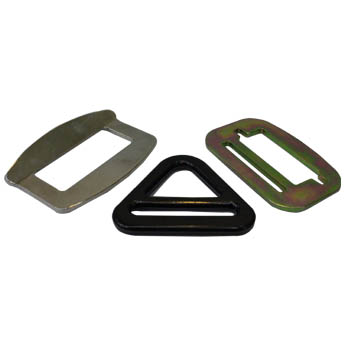連續模沖壓
 連續模沖壓的工作原理是將金屬板材沿一條連續的加工線進行沖壓。
連續模沖壓的工作原理是將金屬板材沿一條連續的加工線進行沖壓。
冠豪工業社
電話:886-4-7696528 傳真:886-4-7685402
50441彰化縣秀水鄉曾厝村福陵巷75號
連續模沖壓是沖壓加工中的一種常見方式,也被稱為連續沖壓或線性沖壓。它通常用於生產大批量的金屬產品,如車身板、鎖具、五金零件等。
連續模沖壓的工作原理是將金屬板材沿一條連續的加工線進行沖壓。沖壓機會將金屬板材拉進沖壓模具中,完成一個或多個加工步驟,然後將金屬板材推出模具,繼續沿著加工線進行下一步加工。這個過程是連續進行的,可以達到高效的生產效率和精度。
連續模沖壓通常由多個沖壓模具組成,每個模具完成一個或多個加工步驟。整個加工過程需要嚴格控制沖壓機的壓力、速度、位置等參數,以確保產品的品質和精度。
連續模沖壓的優點在於可以快速、高效地生產大批量的產品,並且能夠實現高精度、高一致性的加工效果。此外,它還可以減少加工過程中的浪費和人力成本,提高生產效率和質量。
冠豪工業社作為一家專業的沖壓加工廠家,擁有豐富的經驗和專業技術,能夠提供各種形狀和尺寸的沖壓產品,包括連續模沖壓產品。該公司擁有先進的生產設備和技術,能夠確保產品的精度和品質。
 連續模沖壓的優點在於可以快速、高效地生產大批量的產品連續模沖壓是沖壓加工中的一種常見方式,也被稱為連續沖壓或線性沖壓。它通常用於生產大批量的金屬產品,如車身板、鎖具、五金零件等。
連續模沖壓的優點在於可以快速、高效地生產大批量的產品連續模沖壓是沖壓加工中的一種常見方式,也被稱為連續沖壓或線性沖壓。它通常用於生產大批量的金屬產品,如車身板、鎖具、五金零件等。
連續模沖壓的工作原理是將金屬板材沿一條連續的加工線進行沖壓。沖壓機會將金屬板材拉進沖壓模具中,完成一個或多個加工步驟,然後將金屬板材推出模具,繼續沿著加工線進行下一步加工。這個過程是連續進行的,可以達到高效的生產效率和精度。
連續模沖壓通常由多個沖壓模具組成,每個模具完成一個或多個加工步驟。整個加工過程需要嚴格控制沖壓機的壓力、速度、位置等參數,以確保產品的品質和精度。
連續模沖壓的優點在於可以快速、高效地生產大批量的產品,並且能夠實現高精度、高一致性的加工效果。此外,它還可以減少加工過程中的浪費和人力成本,提高生產效率和質量。
冠豪工業社作為一家專業的沖壓加工廠家,擁有豐富的經驗和專業技術,能夠提供各種形狀和尺寸的沖壓產品,包括連續模沖壓產品。該公司擁有先進的生產設備和技術,能夠確保產品的精度和品質。
連續模沖壓是一種高效、節省成本的金屬加工方式,它可以在一次加工過程中完成多種工序,如沖剪外型、沖孔、壓印、折彎、成形等,同時使用一組模具和一台沖壓機來完成,從而大大提高了生產效率和加工質量。
連續模沖壓通常使用捲料作為原材料,將捲料送入沖壓機中進行加工,每次沖製完成後,再進行下一個工序,直至完成所需產品的加工。在連續模沖壓中,模具是關鍵的部分,需要根據產品的要求和工藝流程進行設計和製作,以確保產品的精度和穩定性。
連續模沖壓有以下幾個優點:
生產效率高:使用連續模沖壓可以在短時間內完成多種工序,從而大大提高了生產效率,降低了生產成本。
加工精度高:連續模沖壓使用同一組模具完成多個工序,從而可以確保產品的精度和穩定性。
生產成本低:連續模沖壓可以在一次加工過程中完成多個工序,從而節省了生產成本。
加工適用性廣:連續模沖壓可以應用於各種不同形狀和尺寸的產品加工,包括汽車零配件、家電配件、五金配件等。
冠豪工業社作為一家專業的沖壓加工廠家,擁有豐富的連續模沖壓經驗和專業技術,能夠為客戶提供高品質、高效率的產品和服務。該公司的模具設計和製造符合國際標準,使用先進的沖壓設備和技術進行生產加工,能夠為客戶提供多種不同形狀和尺寸的產品加工,如汽車零配件、五金配件、家具五金配件等。
連續模沖壓,作為一種現代製造業中的高效生產工藝,在各個行業中都扮演著重要的角色。本文將深入探討連續模沖壓的概念、工藝過程、優勢、應用領域以及未來發展趨勢。透過這份2000字的文章,我們將詳細瞭解連續模沖壓的特點和對現代製造業的重要性。
第一部分:連續模沖壓的概念
連續模沖壓是一種高效的金屬加工工藝,通過使用連續運行的模具和沖壓機器,將金屬帶材或卷材沖壓成所需的形狀和尺寸。這種工藝的主要特點是連續的生產過程,模具會持續移動並對金屬進行連續的操作,從而實現高速和高效的生產。連續模沖壓廣泛應用於汽車、電子、家電、建築等多個行業,以生產各種金屬零部件和產品。
第二部分:連續模沖壓的工藝過程
連續模沖壓的工藝過程包括以下主要步驟:
材料供應:金屬帶材或卷材被供應到沖壓機器中,並由供料系統引導進入模具。
沖壓操作:模具持續運動,對金屬進行連續的沖壓操作,根據模具的設計將金屬塑形成所需形狀。
分切:在沖壓過程中,金屬帶材可能需要被切割成固定的長度,以產生成品。
排放:成品通過排放系統被排出,進入下一個階段的處理或包裝。
控制系統:連續模沖壓通常配備先進的自動化控制系統,用於監測生產過程,調整參數,並確保品質一致性。
第三部分:連續模沖壓的優勢
連續模沖壓的工藝帶來了多重優勢,使其成為現代製造業中的首選選擇:
高生產效率:連續運行模具和高速沖壓機器使生產效率大幅提升,能夠應對大規模生產需求。
一致性和精確度:連續模沖壓具有高度一致的加工特性,能夠實現高精度的成品。
生產速度:連續模沖壓可以實現高速生產,從而縮短生產週期,提高市場反應速度。
材料利用率高:這種工藝可以最大程度地減少材料浪費,因為模具可以更有效地利用原始材料。
適應性強:連續模沖壓適用於多種金屬材料,並且可以實現多種形狀和尺寸的加工。
第四部分:連續模沖壓的應用領域
連續模沖壓廣泛應用於多個行業,以下是一些主要的應用領域:
汽車工業:用於生產汽車車身部件、底盤組件、內飾部件等。
電子產業:用於生產電子設備的金屬外殼、連接器和散熱器等部件。
家電產業:用於生產家電產品,如洗衣機、冰箱、微波爐的外殼和組件。
建築業:生產建築結構和門窗等金屬零部件。
金屬容器:用於生產金屬容器,如罐頭、瓶子和金屬桶。
能源工業:生產風能和太陽能設備的金屬組件。
第五部分:連續模沖壓的未來發展趨勢
連續模沖壓作為一種高效生產工藝,將在未來繼續發展和演進。以下是一些未來發展趨勢:
智能製造:應用人工智能和機器學習技術來優化連續模沖壓生產,實現更高的自動化和智能化。
數字化技術:使用數字化技術來模擬和優化生產過程,提高生產效率和品質。
材料創新:開發新的高強度和輕量化材料,以滿足節能和環保的需求。
高速沖壓:繼續提高連續模沖壓的生產速度,以應對更高的市場需求。
可持續性:更注重材料利用率和環保,減少資源浪費和能源消耗。
結論
連續模沖壓作為一種高效的金屬加工工藝,在現代製造業中具有不可或缺的地位。它的高生產效率、一致性和精確度,以及廣泛的應用領域使其成為許多行業的首選選擇。未來,隨著智能製造和數字化技術的不斷發展,連續模沖壓將繼續適應市場需求,實現更高效、更環保和更可持續的生產。希望這份文章能夠幫助讀者更深入地了解連續模沖壓的重要性和未來趨勢。
當談到連續模沖壓時,還有一些更多的方面和話題可以探討。以下是一些關於連續模沖壓的更多信息和討論:
連續模沖壓設備:深入研究連續模沖壓機器的不同類型和特點,包括高速連續模沖壓機、帶材連續模沖壓機等。
材料選擇和特性:探討不同類型的金屬材料在連續模沖壓中的應用,以及它們的特性和優勢。
品質控制和檢測:談論如何實施嚴格的品質控制和檢測程序,以確保連續模沖壓產品的一致性和質量。
自動化和機器人化:研究自動化和機器人技術在連續模沖壓中的應用,以提高生產效率和安全性。
應對材料變化:討論如何應對材料的變化,包括厚度、硬度和表面處理的不同,以確保一致的加工結果。
安全性和維護:探討連續模沖壓機器的安全性措施和定期維護的重要性,以確保工作場所安全。
成本效益分析:進行連續模沖壓與其他加工方法(如傳統模沖壓、沖壓成型等)的成本效益比較,以確定最佳的生產選擇。
教育和培訓:討論培訓連續模沖壓操作人員和維護人員的重要性,以確保他們具備必要的技能和知識。
國際市場和競爭:分析不同國家和地區在連續模沖壓領域的競爭優勢,以及全球市場的趨勢和機會。
革命性應用:討論一些創新和革命性的連續模沖壓應用,如輕量化車身結構、可穿戴技術和綠色能源領域的應用。
這些更多的話題可以進一步擴展對連續模沖壓的理解,並幫助讀者更深入地掌握這一現代製造業的關鍵工藝的多個方面。連續模沖壓在提高生產效率、節約材料和實現高精度加工方面具有巨大的潛力,因此值得進一步研究和探討。
